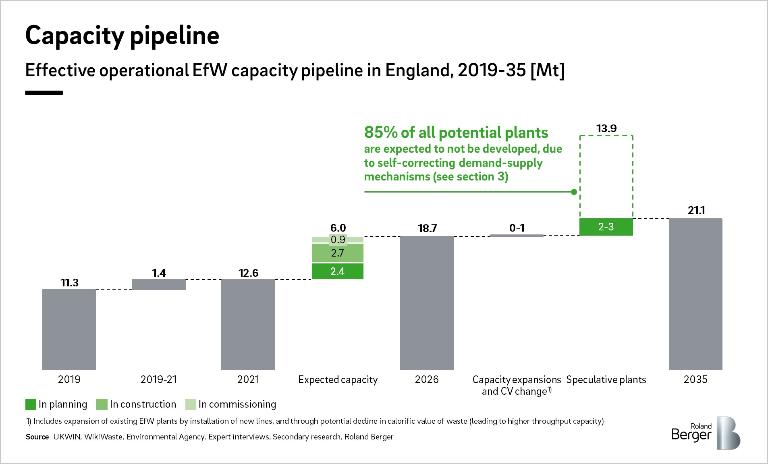Energy from Waste: A new perspective
![{[downloads[language].preview]}](https://www.rolandberger.com/publications/publication_image/roland_berger_web_25_1005_default_cover_03_download_preview.jpg)
The future Energy from Waste capacity gap on a regional level based on forecast residual waste arisings and infrastructure build-out


As residual waste in England declines further, the Energy from Waste infrastructure continues to build out with an additional 6 million tonnes of expected capacity to come online in the next 4 years. While this will reduce the national capacity gap to around 3 million tonnes, the dynamics at a regional level should vary dramatically. It is the regional capacity gap that is most important to operators and investors due to the need to secure waste feedstock, ideally within close proximity to EfW plants to limit transportation costs. In this final volume in our three-part series we provide our perspective on the future EfW capacity gap on both a national and regional level.
"With current EfW pipeline we expect the capacity gap to fall to around 3 million tonnes by 2026 and to close by around 2029"
National capacity cap to close by ~2029
The difference between EfW addressable residual waste and EfW processing capacity in England (i.e. the national capacity gap) was around 9 million tonnes in 2021 and is expected to fall to 3 million tonnes by 2026, largely due to new EfW facilities becoming operational. With gradually declining residual waste, the rapid build-rate of EfW infrastructure, and a large pipeline of planned facilities, it may strike the reader that overcapacity is inevitable. This occurred in other European countries around the time of the financial crisis. Lessons have been learned and market participants already see a higher share of planned facilities not receiving approval on environmental, planning, and financial grounds. We expect the remaining capacity gap to disappear, but with no further plant approvals once this occurs limiting the potential for overcapacity.
Regional capacity gap will depend on plant approvals
The 6 million tonnes of expected capacity that is either in commissioning, in construction, or likely to be developed is weighted towards the northern regions, which will result in even more constrained supply demand dynamics in these areas. Of the remaining 14 million tonnes of planned facilities that have been announced, only around 15% are expected to gain approval and financing. Those in undersupplied regions are thus more likely to be approved as they should be able to demonstrate the necessity for this infrastructure and secure waste supply contracts necessary to achieve financing. This will leave around half of English counties undersupplied, and the other half taking in more waste than they produce themselves. Movement of waste between counties will take place.


![{[downloads[language].preview]}](https://www.rolandberger.com/publications/publication_image/roland_berger_web_25_1005_default_cover_03_download_preview.jpg)
The future Energy from Waste capacity gap on a regional level based on forecast residual waste arisings and infrastructure build-out